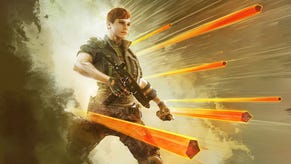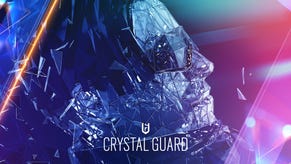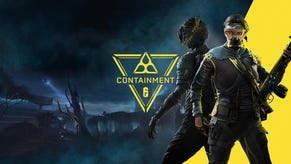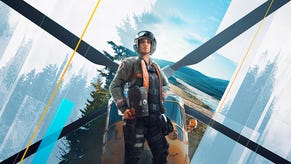Rainbow Six Siege Interview: Finding Meaning in Destruction
We talk with game designer Andrew Witts about the return of Rainbow Six.
This article first appeared on USgamer, a partner publication of VG247. Some content, such as this article, has been migrated to VG247 for posterity after USgamer's closure - but it has not been edited or further vetted by the VG247 team.
Can destruction be meaningful? A number games allow for crazy wanton destruction, like Just Cause 2 or Red Faction Guerilla, but that destruction isn't always purposeful. It can be, but that's not the point of many of those titles.

Rainbow Six Siege wants players to explore the idea of meaningful, tactical destruction. The new title from Ubisoft Montreal takes the classic first-person tactical gameplay and expands it with the ability to punch holes in windows, walls, and doors with your equipment. Do you need to see into the next room? Shoot a peephole into the wall. Need to provide fire support? Take a sledgehammer to that wall. Your playable Counter Terrorist Unit (CTU) has new options for offense and defense in Siege.
"The tech was there," explained game designer Andrew Witts about Siege's new focus on destruction. "RealBlast is the destruction engine that was developed back at Ubisoft Montreal. We were working on a new Rainbow Six and we knew that breaching was going to be a big part. Then we saw what was possible and we said 'Let's play with this a bit.' It became the core aspect of the game. Using destruction in a tactical way, a new emergent way, became a vital piece of Siege."
That tactical destruction means that this isn't like Red Faction Guerilla, where every facet of a structure can be destroyed. You can take down a wall or window, but you'll never destroy a structure to the point where a room will collapse completely. There's more destruction, not infinite destruction. The bones of a building remain intact.
"We wanted it to have tactical options in terms of destruction," adds Witts. "You're making a choice to take a new path, you're making a choice to make a window to get line-of-sight. We never want it to be, 'Oh, I'm just going to blow up that room so it doesn't exist anymore.' We never want it to make it unplayable. It's all about maintaining gameplay and not ending gameplay."
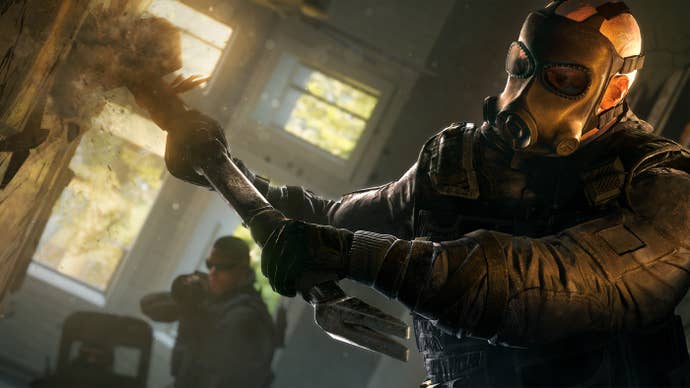
Witts admitted that the team has to test levels "consistently and constantly" thanks to the new destruction feature. The closed alpha period for the game was Ubisoft's chance to see how players would react to the enhanced destruction options. Would they go hog wild, or never use the new choices available?
"The closed alpha was our chance to really throw two maps out, he said. "In terms of spacial awareness, destruction in a very small map can make you feel exposed very quickly. We learned a lot about how players react to that kind of environment and what they expect to happen."
TerroHunt is one of Rainbow Six Siege's primary game modes, putting a team of 1-5 player-controlled operators up against waves of AI enemies. In attack mode, you're attempting to breach an area to disarm a bomb or save a hostage. Once you've reached your objective, you switch to defense mode, having to protect your room against oncoming waves of enemies. There's a solid flow between offense and defense in TerroHunt and teamwork is key.
In the TerroHunt game I played, each team member was given the choice between various operators, each with specific weapons and gameplay focuses. Every operator also represents a CTU from around the world. The gas-mask wearing Sledge carries a massive sledgehammer for opening up walls, and he's British Special Air Service (SAS). Twitch is a part of the National Gendarmerie Intervention Group (GIGN) and pilots unmanned drones to scope out situations. Ash is FBI Special Weapons and Tactics (SWAT) and she can use her breaching charges to break objects from a distance. I chose Sledge, because slamming holes into walls is cool.
"We wanted to go back to the Rainbow operators of previous games," Witts told me. "Just being a statistic, where this person does more destruction than somebody else, that didn't make sense for us. So we said 'Let's show how unique this person's destruction is by giving them a gadget.' That's why Thermite has a thermite charge that can blow up wall reinforcements and shred metal. That's our interpretation of previous games. Then we have to think, 'What's a cool counter to that?' We've been designing things based on moves and countermoves."
Unfortunately, while there's extensive weapon customization and you can change your loadout, the operators themselves currently don't have many customization options. If you want the thermite charge, you're playing Therma. The game will ship with ten operators on attack and ten on defense, according to Witts. Perhaps Ubisoft will add more models for each operator type in the future, but such a feature hasn't been announced yet.

When you're actually in-game, it's surprising how much restraint you'll have. You don't want to go around blowing up walls and kicking in doors randomly. That's a quick way to get killed. The sledgehammer was there on my back, but I didn't just use it anywhere.
There's a moment when you're playing Siege when it all comes together and the enhanced destruction just makes sense. For me, it was shooting a hole in a wall to take a look in the room the Terros were holding. After we took a bodycount and got to our positions, our lead breached the main door with a charge and another player pushed forward with an expandable riot shield. Then I beat a hole in the wall to provide additional suppressing fire. When you have a good team, tactical destruction makes a ton of sense. It's damn fun too.
I asked Witts if there were any interesting tactics that they've seen since the closed alpha launched.
"There was one we had seen in the prototyping phase of the game, but we hadn't seen it rear its head for a while," he answered. "It's like seeing a friend you haven't seen in years. People would reinforce a different room and put down jamming devices. Their opponents would think, 'They reinforced the Workshop, so [our target is] definitely in the Workshop." So everyone rappels up to the second floor and into the Workshop and there's no hostage. The defending team blows up C4 in the walls and just kills the opposing team. We saw it on Twitch of all things."

The destruction in Rainbow Six Siege isn't very realistic if you think about it too much. Certain objects get destroyed faster than they would in real life, while others allows you to somehow punch discrete holes without the bullets completely flying through. That's because Ubisoft decided to err on the side of gameplay, not realism.
"The Clancy games always take reality and make fantastical gameplay out of it," said Witts. "Taking this real component and asking, 'How is this fun gameplay?' We knew shooting a wall X amount of times in games is just decals. For us, we wanted that to be more meaningful."
"In movies, a guy with an LMG shoots forever and a wall tends to break apart," he continued. "What if we accelerated that process per bullet? Making a window for yourself or your teammate without having to expose yourself. We said, 'Let's put it in the build and try it out.' We did and we had so much fun with it. The tuning of it has gone through some iterations, like handguns taking a little bit more time because they have less stopping power. It's all about this balance and maintaining what the players think is going to happen."
TerroHunt is only one of the modes in the game, the one that happened to be the focus of my demo. According to Witts, there will be three offensive TerroHunt modes, one defensive mode, and three PVP modes. These will be spread across 11 TerroHunt maps, each of which will be randomized by the game's all-new Siege Generator. The Generator changes up the placement of Terros, barricades, and objectives, so each time you head into a map, things will be different. The AI is beefier too, so it can adapt its tactics to the random placement. That keeps games a bit more dynamic, instead of settling into the same patterns of play.
On top of that is the game's three difficulty modes: Normal, Hard, and Realistic.
"Realistic is hard," Witts joked. "The AI are ruthless, they punish you for small mistakes. All the designers, including me, play realistic. When you beat it, you'll think 'that was so hard,' but you feel so satisfied."
Rainbow Six fans have been waiting a long time. The last real Rainbow Six game was 2008's Rainbow Six: Vegas 2. Rainbow Six: Patriots was announced in 2011, but the concept was later scrapped and replaced with Siege. This is Ubisoft's chance to do right by the Rainbow Six community and the team at Ubisoft Montreal know that.
"We're all fans of the Rainbow franchise," said Witts. "We all bring a certain commentary or perspective when we're making this game. Xavier Marquis, the creative director, actually did a full gameplay case study on the Rainbow games, distilling it down to pure gameplay. Rainbow Six is always a confrontation between the CTUs and the Terros. The Terros are in a space and the CTUs have to get in there. The entire game is about that. Destruction has always been there, but it's only been around doors and windows. Opening that up still stays true to ideas have always been there since the beginning. We still have the Rainbow skeleton."






